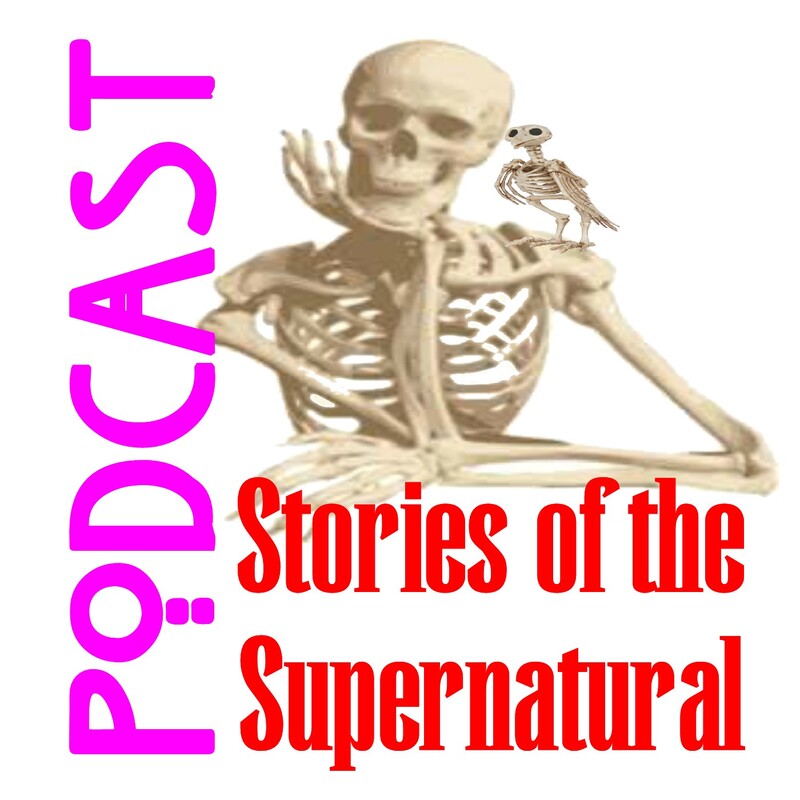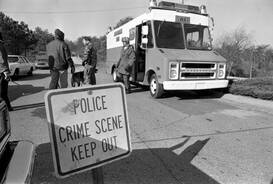 By M.P. Pellicer | Stranger Than Fiction Stories Usually a conviction in a murder, marks the end of the investigation. But there are cases which linger with unanswered questions. 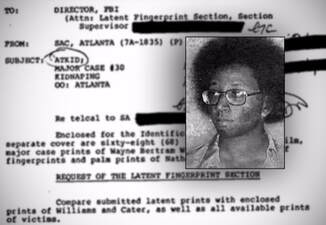 Wayne Williams was the main suspect in the Atlanta child murders (Source - FBI.gov) Wayne Williams was the main suspect in the Atlanta child murders (Source - FBI.gov) From July, 1979, to May, 1981, over two dozen children, teenagers and adults were murdered. Many of them shared common details, however their inclusion as victims of the same perpetrator seemed random. The FBI joined the investigation in 1980, and referenced it as ATKID (Atlanta Child Murders), after the abduction of Latonya Wilson, who disappeared on the night of her seventh birthday. She was not discovered until October 18, but her skeletal remains did yield clues as to how she was killed. Curfews were imposed on the city, but dead bodies kept turning up. In the spring of 1981, authorities realized the perpetrator was now dumping the bodies into the Chattahoochee River. Staking out the 14 bridges in the city finally paid off when close to 3 a.m. on May 22, a surveillance group heard a loud splash. A car driving off the bridge was stopped, and the driver was Wayne Williams, 23, a freelance photographer. Without probable cause he was released, however two days later the body of Nathaniel Cater was found downstream. Williams' alibi was faulty, and earlier in the year he had been arrested for impersonating a police officer. He would go on to fail multiple polygraph examinations. In addition his description matched one given by witnesses as being seen with at least one of the victims. It didn't help Williams when it was reported he had been distributing flyers around Atlanta advertising for young men, age 11 to 21, to audition for a singing group he was organizing. In 1982, Wayne Williams was brought to trial over the murder of two adults, both ex-convicts. He was found guilty, though authorities linked him to 20 of the 29 murders. Some believe there were more victims that were never included in this group, which did fit the profile for being killed by the same perpetrator(s). The murders stopped after Williams was sentenced to two life terms. 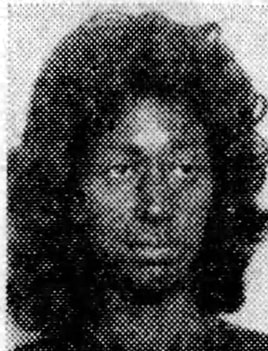 Shirley McGill c.1981 (Source- Miami Herald) Shirley McGill c.1981 (Source- Miami Herald) However while the investigation was still ongoing, another story was developing in the background. In April, 1981, a month before the last Atlanta murder was committed, Roy Innis staff director of the Congress of Racial Equality (CORE) announced he had a witness who could provide a link to the case. He told police that his group had a suspect under surveillance. Their witness was Shirley McGill, 26, a Miami cocktail waitress who told Innis that her ex-boyfriend Parnell C. Trahan, and his friends had killed four of the victims. Miami PD released a photo of a woman with the same name, that they said had a long rap sheet. CORE said this was not the same person. She said she had become involved with Trahan in 1977. He was a 30-year-old Vietnam vet and taxi driver. He was also an occultist, drug trafficker with hubs in Georgia and Texas. Trahan brought her to Atlanta to keep the books for the group. She worked with a man named Ted Shaw and a woman known as Joanne, who would later be killed by the cult for embezzling the treasury. Membership in the group numbered between 40 to 50, and they would use code numbers instead of names. She described where the drug ring operated by limiting the knowledge of who was in one cell from another. However she was eventually introduced to an inner, controlling circle of satanists. She said members of the drug network were black, but the high priest during the ceremonies was a white man. Participants were both white and black. The high priest would appear naked, heralded by a puff of smoke. He wore goat horns on his head. A ring of candles surrounded an altar, with a statue of a short, fat man seated on a throne. According to McGill, she witnessed animal and human sacrifices, where the victims' throat would be slit and their blood drunk from a chalice. An orgy would follow including bestiality. She identified several outdoor sites where rituals were held. Disposal of the bodies were accomplished using local funeral homes, where they were place in the closed coffins of people being buried. She also pointed out places where the drug operations were being run. One was a machine shop, another a bar, and there was a house. The Executive Intelligence Review (EIR) reported in March, 1980, that she was invited to an initiation ceremony held in Atlanta. She was told to wear a long dress with a scarf over her head, but no undergarments. During the ritual, dope was smoked and there was sexual activity, but in order to distance herself from the cult activities she volunteered to act as a guard on the perimeter where the rituals took place. If the murders were the ritual sex slayings of a satanic cult, it might be expected that a photographer would be somehow implicated for the production of child pornography. Also, since Williams was a black homosexual, suggests he may have played a role in luring some of the victims to their deaths. Additionally, the EIR report claims that "information was made available to the defense team naming two police officers who were reportedly in Williams´s satanic group," though satanism was not raised by either the defense or the prosecution. McGill said one of her ex-boyfriend's accomplices was a white man. He would wear a brunette wig but his hair was shoulder length and blond. She said Trahan was a pick up man that would take the victims after they had been chosen. Strangulation or asphyxiation was the most common means of killing, but some victims were shot, stabbed, and bludgeoned. Others were so badly decomposed that cause of death could not be determined. Angel Lenair, 12, was found in 1980, tied to a tree with her hands tied behind her. She had someone else's panties jammed into her throat. She was sexually abused and strangled with an electric cord. In 1981, the body of Lubie Geter, 14, was discovered. He'd been strangled and his genitals, lower pelvic area and both feet were all missing. McGill related three incidents which occurred apart from these ceremonies, one of them in a barn. A black man dragged what appeared to be a dead black child into the barn by a rope tied around the child´s neck. Various individuals tried to get McGill to pull the rope but she refused. The child´s body was then placed in the trunk of a car. On another occasion, McGill was working in the machine shop, when two men brought in a young black child who was bound. The boy knew McGill and appealed to her for help. He told her that he would be killed because he had withheld money from the sale of drugs. Later she witnessed his murder, when a plastic bag was placed over his head. On another occasion she saw on the floor of the barn a naked child, who appeared to be dead. 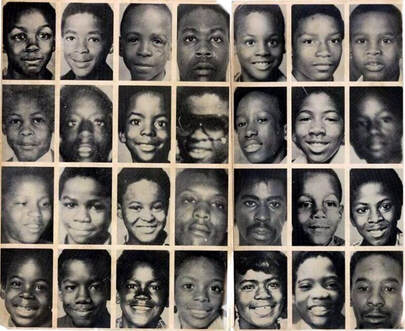 Atlanta child murder victims c.1979-1981 Atlanta child murder victims c.1979-1981 McGill moved back to Hallandale Beach, Florida, when he started to call her again around 1981, boasting of who they planned to kill. Initially she didn't believe him. She said the first story her ex-boyfriend told her was about two black 14-year-olds. This was in March, 1981, before the bodies were found, and still she didn't pay much attention, until he described them as both being retarded. Eddie Duncan and Larry Rogers, both 21, were mentally retarded. Duncan was found March 31, and Rogers on April 9. McGill would go on to pass two polygraph tests and said the same story under hypnosis. A psychiatrist examined her and found her to be sane, despite her brother Larry describing her as a heroin addict. Shirley McGill died in 2007. According to Programmed to Kill by David McGowan, the members came from Georgia and Florida. Wayne Williams was identified as a member of the cult who she had seen filming rituals, but not directly participating in the homicides. As a bookkeeper for the cult, MGill said it involved buying used cars in Miami, packing them with drugs and driving them to Atlanta and Houston. She said the ring had police protection. Her allegations were not pursued as being too outlandish. The mother of Timothy Hill one of the victims was shown a photograph of their suspect by CORE. She said, "I have seen him in the community — always alone, never with anybody else. I recognized him right off." Despite the authorities dismissal of Shirley McGill's disclosure, a few months before, police received an anonymous tip which led them to an abandoned home in southwest Atlanta. Neighbors were interviewed and they reported weird comings and goings at strange hours. Police who went inside the house felt sick, and smelled an odor "like decaying flesh", but no bodies were inside. They did find children's clothing, along with an ax, a hatchet and two bibles nailed to the wall, both open to passages on human sacrifice. Professor Carl Raschke wrote that in the neighborhood where the murders had occurred, children had told police about satanic sex abuse, in which they were made to drink both animal and human blood. Six months after McGill came forward, searchers stumbled upon a ritual site littered with the remnants of slaughtered animals. There was a blood-stained, stone altar and a 12-foot-high charred cross. Criminal profiler John E. Douglas wrote in his book, Mind Hunter that he believed Williams didn't commit all the murders. Despite what his supporters maintain, I believe the forensic and behavioral evidence points conclusively to Wayne Williams as the killer of eleven young men in Atlanta. Despite what his detractors and accusers maintain, I believe there is no strong evidence linking him to all or even most of the deaths and disappearances of children in that city between 1979 and 1981. Despite what some people would like to believe, young black and white children continue to die mysteriously in Atlanta and other cities. We have an idea who did some of the others. It isn't a single offender and the truth isn't pleasant. So far, though, there's been neither the evidence nor the public will to see indictments.  In 2007, DNA testing was completed that showed that hairs on the bodies of victims contained mitochondrial DNA that matched Williams' dog. The same year, the FBI tested two human hairs found on one of the victims, and the mitochondrial DNA matched Williams' DNA. In 2010, DNA testing was performed on human scalp hairs found on the body of Patrick Baltazar, the 16th victim. The laboratory report found the scalp hairs had the same type of DNA sequence as did Wayne Williams' own hair. In 2019, Atlanta's mayor Keisha Bottoms, and Erika Shields the police chief announced they would re-test evidence from the case. As of 2023, neither of them hold their respective positions any longer, so where that leaves the retesting of evidence is unknown. The only common denominator these victims had was the area where they lived, which was Memorial Drive and eleven cross streets, and their race. One of them was as young as 7 years old, and it seems they were selected at random or dictated by opportunity. Only three were female. Chet Dettlinger in The List suggests there there were 63 "pattern" victims that were omitted from the official roster, 25 of them murdered after Williams was arrested. Many believe that Williams did commit some of the murders, but not all of them. He was convicted of 2 deaths, but the 22 cases were closed despite no conviction attached to them. Many question if their deaths were the handiwork of another perpetrator.
0 Comments
Your comment will be posted after it is approved.
Leave a Reply. |
Stranger Than Fiction StoriesM.P. PellicerAuthor, Narrator and Producer Archives
July 2024
Categories
All
|
Stories of the Supernatural
- Stories of the Supernatural
- Miami Ghost Chronicles
- M.P. Pellicer | Author
- Stranger Than Fiction Stories
- Eerie News
- Supernatural Storytime
-
Astrology Today
- Tarot
- Horoscope
- Zodiac
-
Haunted Places
- Animal Hauntings
- Belleview Biltmore Hotel
- Bobby Mackey's Honky Tonk
- Brookdale Lodge
- Chacachacare Island
- Coral Castle
- Drayton Hall Plantation
- Jonathan Dickinson State Park
- Kreischer Mansion
- Miami Biltmore Hotel
- Miami Forgotten Properties
- Myrtles Plantation
- Pinewood Cemetery
- Rolling Hills Asylum
- St. Ann's Retreat
- Stranahan Cromartie House
- The Devil Tree
- Trans-Allegheny Lunatic Asylum
- West Virginia Penitentiary
- Paranormal Podcasts
"When misguided public opinion honors what is despicable and despises what is honorable, punishes virtue and rewards vice, encourages what is harmful and discourages what is useful, applauds falsehood and smothers truth under indifference or insult, a nation turns its back on progress and can be restored only by the terrible lessons of catastrophe."
- Frederic Bastiat
- Frederic Bastiat

Copyright © 2009-2024 Eleventh Hour LLC. All Rights Reserved ®
DISCLAIMER
DISCLAIMER
 RSS Feed
RSS Feed

